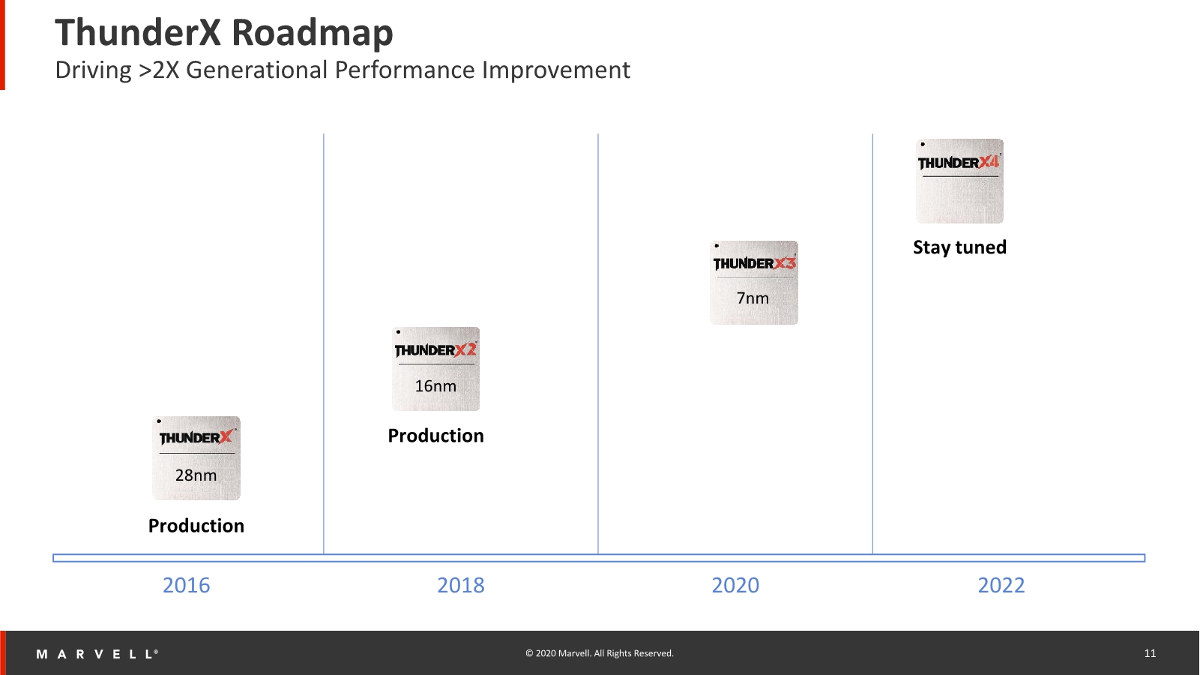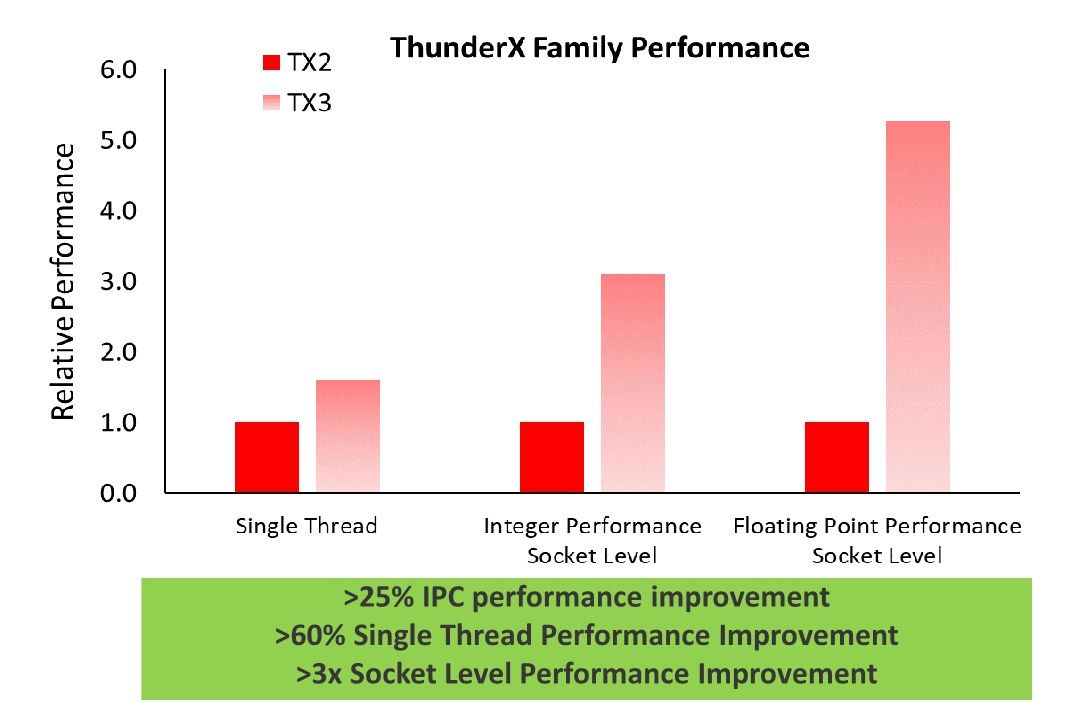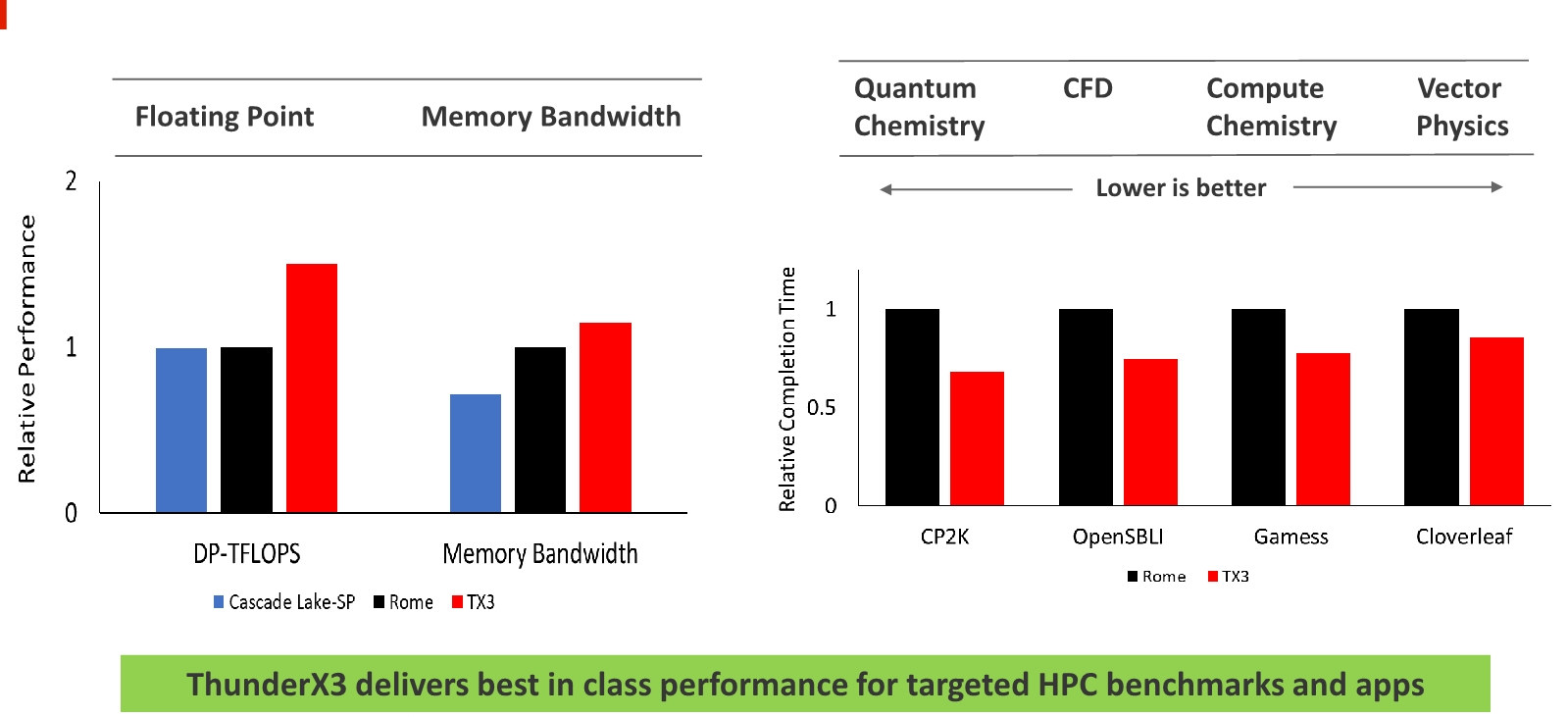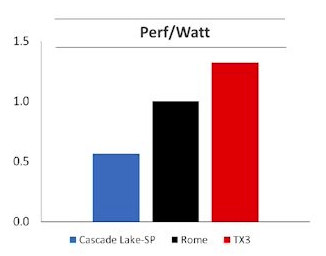Cavium first unveiled their 48-core 64-bit Arm ThunderX server processor in 2014, before following up with ThunderX2 featuring up to 56 cores @ 3.0 GHz providing 2 to 3 more performance compared to the first generation.
Since then, the company has been acquired by Marvell, and now the latter has just announced ThunderX3 third-generation server processor with up to 96 cores, 384 threads in a single socket.
Marvell explains that while x86 servers were historically designed to handle many applications for several thousand users, the market has changed and now servers are becoming more specialized, and for example, given the task to run one application used by millions of users. This change in the market provides opportunities for Arm server processors that do not have legacy features and can be highly customized and optimized.
ThunderX3 key features:
- Up to 96 custom-designed Armv8.3+ cores @ up to 3.0 GHz
- 4 threads per core for up to 384 threads/socket
- 8x DDR4-3200 memory controllers
- 64 lanes of PCIe 4.0, 16x PCIe controllers per socket; 128 lanes, 32 controllers in dual-socket configuration
- 4x 128-bit SIMD (NEON) units
- Enterprise-class RAS and virtualization
- Process – 7nm TMSC
- TDP – 100 W to 240W depending on the SKU
Compared to ThunderX2, the company expects a 60% single-thread performance improvement, and three times the socket level integer performance partially due to the higher number of cores. The chart above shows floating-point improvements are even more impressive with five times the performance at the socket level thanks to a greater number of SIMD units.
ThunderX3 targets both cloud and HPC workloads, and Marvell expects its new processor to outperform Intel Cascade Lake Xeon and AMD Rome Epyc processors in both types of workloads as shown in the charts below.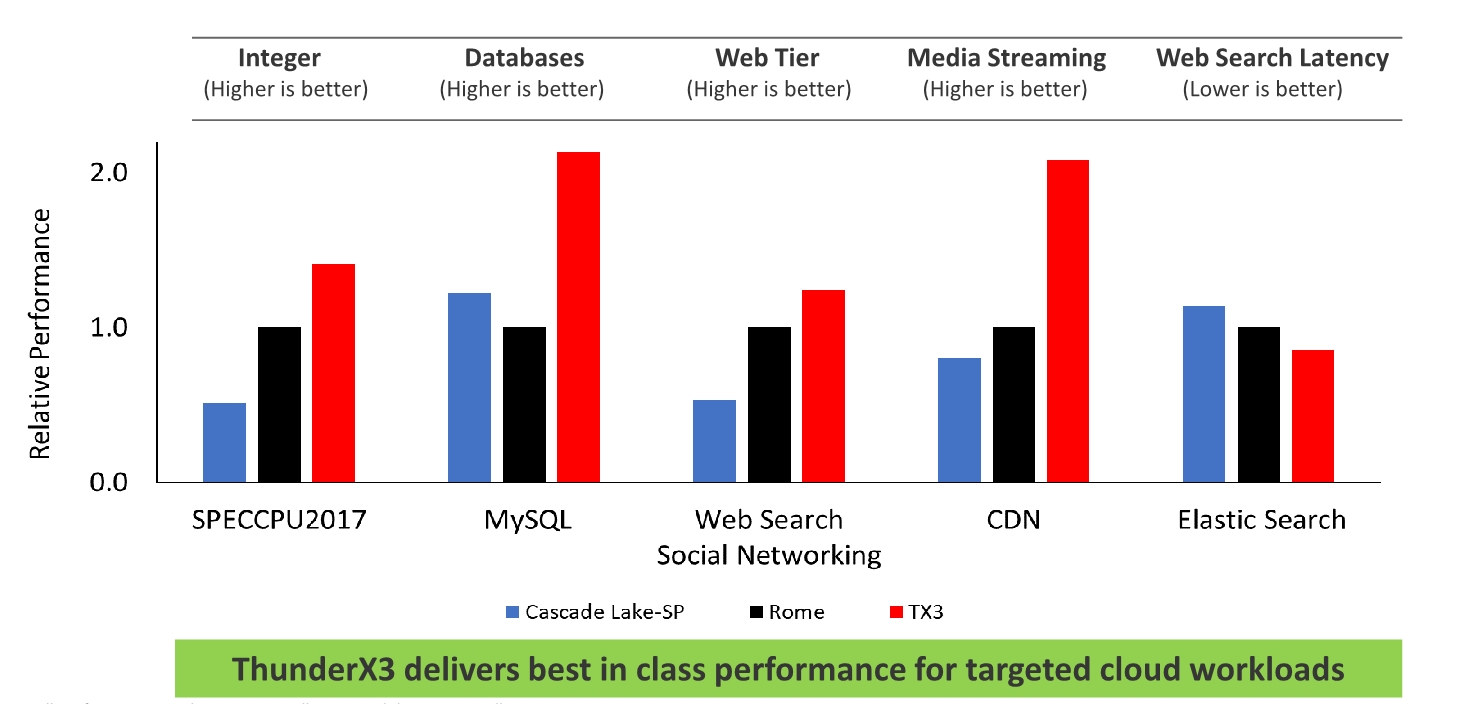
As one would have come to expect ThunderX3 Arm processor is also more efficient than its x86 competitors with significantly higher performance per watt.
The company did not provide any comparison against other recent Arm Neoverse N1 processors such as Amazon Graviton 2 or the just-announced Ampere Altra SoC.
More slides and details can be found on Anantech website.

Jean-Luc started CNX Software in 2010 as a part-time endeavor, before quitting his job as a software engineering manager, and starting to write daily news, and reviews full time later in 2011.
Support CNX Software! Donate via cryptocurrencies, become a Patron on Patreon, or purchase goods on Amazon or Aliexpress


